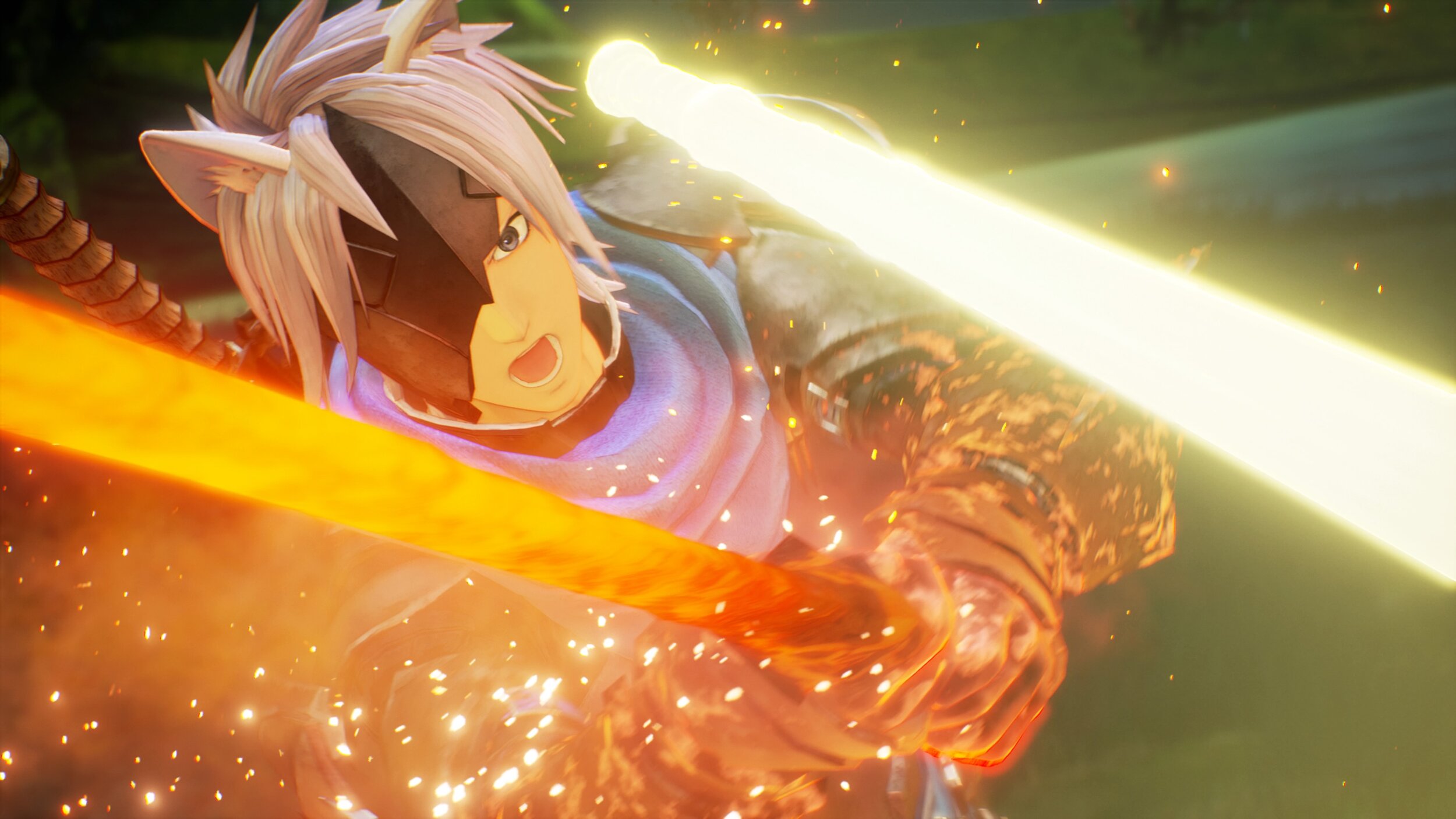Tales of Arise Review - Worlds Apart
/It’s been years since we were given a new mainline entry in Bandai-Namco's Tales Of series. Tales of Berseria left the series on a high note in 2016. With a five-year gap due to delays and a revamped visual style, expectations were up there. Tales of Arise is thankfully worth the wait - this game doesn’t pull any punches, instead retaining and expanding upon all the best qualities that make Tales Of one of the most beloved JRPG series to date.
Real-time action combat is a staple formula for the Tales Of series, but another factor that defines this JRPG is how much time and detail it spends fleshing out all the main characters evenly, giving them enough room to grow from the smallest detail (such as one getting better at cooking) to defining moments that change your impressions of them. Character development is what I adore in any Tales Of game, and it's more apparent in Tales of Arise, as the main cast you meet at its outset grow into completely different characters once you’ve reached the game's endpoint. It felt like I’d gone through a series of story arcs of a long-running anime that stuck the landing.
Timeless JRPG Tropes, Well-Executed
It’s an epic tale of a centuries-old conflict. Characters rising against oppression and aiming for the impossible. A bittersweet high-fantasy tale that takes its time to unravel and embraces the usual JRPG tropes found in classic games of the 90s. It’s all thanks to the various characters, big or small, who elevate the story, making it easy to enjoy the many conversations that occur to provide players more context about the world. Arise has its fair share of twists and turns, a crazy final act, and a sadly forgettable main villain that was more of a nuisance, as the overall story works even if you remove him from the equation.
Tales of Arise’s combat develops just like its story, maturing from simple fights to complex encounters that require you to press a variety of buttons, and utilize the many mechanics at your disposal to keep your group efficient. The pacing is just right as the game slowly stacks new layers of its system, one by one, to give the player enough time to adapt it to their playstyle.
You control one character at a time while the rest of your party is controlled by AI that has priorities set by the player (like when to heal the party or when to use consumable items). Controlling what each of your party members will do may seem limiting at first, but works wonders overall as Tales of Arise makes you feel like the party of six is working as one cohesive unit.
Great Combat, Disappointing Bosses
The combat is flashy and can be a visual overload as you’ll see up to four characters fighting multiple creatures in real-time in a fixed space, throwing skills and spells left and right. But it never gets old even after playing the game for over 60 hours. That also goes for the insanely gorgeous Boost Strikes, which pair up two characters to perform a unique move to finish off an opponent or deal massive damage. Most fights will end with you performing one of these highly decorated sequences, but they still put a smile on my face even though I’ve seen them over a hundred times at this point.
Repetition doesn’t weigh down Tales of Arise’s combat. Combat plays wonderfully most of the time, so going from one battle to another doesn’t feel like a chore, but rather an opportunity to have fun with the game system. But I did find boss encounters to be the complete opposite, as most of them were uninspiring. They can be tough, but not necessarily difficult, as each one is a big damage sponge, making entire encounters feel like wars of attrition rather than entertaining challenges that encourage creativity. What will last longer - my healing, or the boss’ life bar?
Character progression is rather simple to understand; each character has their own set of titles, where you can unlock stat increases or new Artes by spending Skill Points earned in battle. These titles aren’t tied to a character’s level, as they are all unlocked either through story progression, or by meeting certain criteria. For example, there’s a title for one character that's unlocked if you complete an arena match, one of the side activities in the game. You can even get one for a character if you complete a certain side quest. The non-linear system is rather effective, as it encourages doing side activities and rewards you with more options to strengthen your characters.
Weapons and armor are pretty straightforward, as new ones result in higher stats. The real freedom to customize is found in accessories. When equipped, these craftable items will provide significant boosts that can slightly make one character more effective for certain situations, like dealing more wind damage, mitigating specific elemental damage, or simply casting spells faster. Each character’s role is pre-determined and can't be drastically changed to your liking, so strategy is all based on team composition, which accessories are equipped, and how you utilize your team's skills in battle.
A Tales Of Adventure For the Ages
Tales of Arise is a gorgeous looking game from start to finish - and it's no surprise, as this is the first time the Unreal Engine has been utilized to build a Tales Of game. Every region you visit has its own theme, and the developers take pride in their work as there are multiple opportunities for players to just sit there for a minute or two and take in the jaw-dropping vistas thrown at you. Bandai Namco's developers flexed their visuals every chance they got, from story-heavy cutscenes to camera angles showcasing the detail inherent in the locations the player is exploring.
The soundtrack in Tales of Arise also deserves a nod as each track felt explosive, aimed at expressing the grand scale of the world and the adventure this band of characters is undertaking. Orchestrated tracks support the right emotions a player ought to feel at certain parts of the game, with standout battle themes that kick in whenever you’re in an ‘all or nothing’ situation. These epic tracks really pumped me up as I was performing combos and unleashing stylish Boost Attacks.
From a technical standpoint, every section of Tales of Arise felt fine-tuned, as I did not encounter a single FPS drop or technical bug that would detach me from the experience. It ran so smoothly from start to finish that I would be surprised to see Bandai release a patch to improve performance. This goes for both the PS4 and PS5 versions of the game. The PS5 version comes on top only because of one reason - loading times between fights are noticeably faster. Aside from that, the visual detail and features are fairly the same, making either choice a solid option.
What we have here is a game that puts the franchise in a new spotlight at the start of a new generation of consoles, reminding us that the Tales Of series is alive and in good hands. This linear adventure can serve as a great escape, with enough content to keep you invested for weeks, or even months. A few issues can be found in Tales of Arise, but they weren’t enough to taint my time with the game, as this is easily one of the best JPRGs I’ve played in years.
9/10
Highlights
PROS
Fantastic characters that you grow to like more as you progress through the game
One of the best looking Tales Of games to date
Thrilling combat that makes every encounter (besides bosses) a treat to engage in
Features a killer score that never disappointed all throughout the game
CONS
Bosses are lacking that sense of uniqueness as they feel like damage sponges more than anything else
Forgettable main villain. Erase him from the overall picture and it still works
*Tales of Arise comes with aggressive DLC practices that remind you that there are cosmetics and other content on sale to enhance your experience with the game. These come in the form of costumes, exclusive titles, experience boosters, level ups, and outright buying in-game currency. It may be aggressive, but the game can easily be finished at a reasonable time on any difficulty without spending a single cent on any DLC content.
What I’ve Played
Spent over 60 hours before I finished the game
Spent a few hours in New Game Plus+
Did over half the game’s sidequests
Experienced almost all the skits available in the game
Finished the game with more side bosses left to encounter
[This review is based on a PS5 review code provided by Bandai Namco.]




















Death Stranding 2: On the Beach delivers higher visual fidelity, consistent performance across the board, and a few new tricks that make gameplay more accessible, challenging, and fun. If you have the patience and come in with an open mind, you’ll be in an exclusive group of people who will struggle to describe this experience to anyone else.